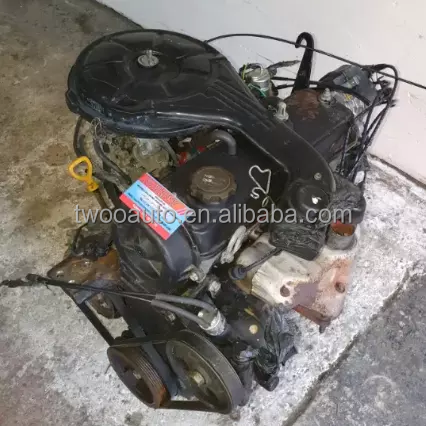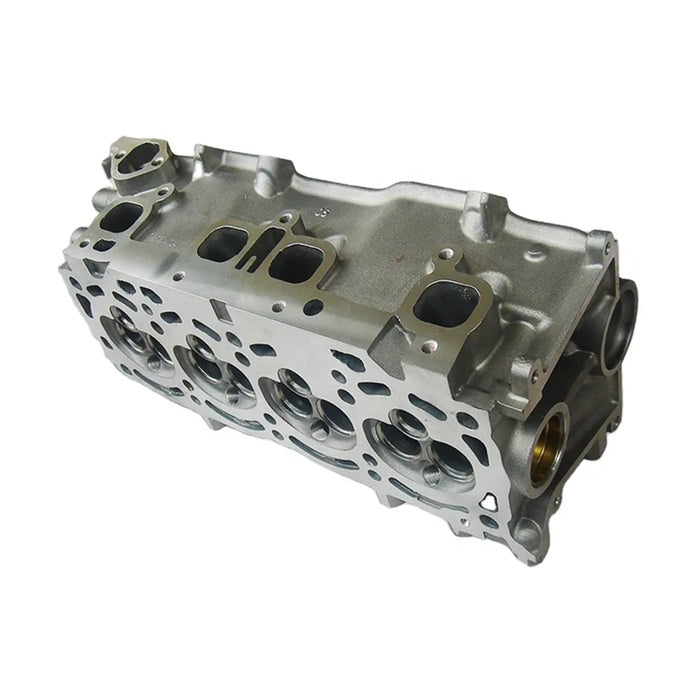Toyota Tazz: Why It Continues to Be a Trusted Vehicle for Daily Commuting
Toyota Tazz: Why It Continues to Be a Trusted Vehicle for Daily Commuting
Blog Article
Explore the current Fads in Engine Modern Technology Via Tazz
In the swiftly advancing landscape of auto modern technology, Tazz stands at the center, highlighting considerable innovations in engine systems that focus on both advancement and sustainability. From hybrid engines that optimize gas performance to the introduction of hydrogen fuel cells, the fads forming contemporary powertrains are not only enhancing efficiency however also addressing essential ecological difficulties.
Crossbreed Engine Innovations
Crossbreed engine innovations stand for a critical shift in auto innovation, combining the advantages of internal burning engines with electric propulsion systems. This integration not just improves fuel effectiveness but additionally minimizes emissions, conference increasingly rigid environmental laws. By using both power sources, hybrid engines can maximize performance, providing power when required while saving fuel throughout much less demanding motoring conditions.
Recent innovations in hybrid modern technology include renovations in battery effectiveness and regenerative stopping systems. These developments permit higher power recuperation during deceleration, which can be redirected to assist in acceleration or power auxiliary systems. Producers are concentrating on light-weight products and compact designs to make the most of the performance of crossbreed powertrains.
The growth of plug-in hybrids has also broadened the market, allowing motorists to bill their automobiles using basic electric outlets. This function frequently enables for considerable all-electric array, more reducing reliance on standard gas. tazz. As the automobile market proceeds to progress, hybrid engine technologies are anticipated to play an important role in connecting the void in between traditional vehicles and fully electrical versions, providing a transitional service that accommodates diverse consumer needs and preferences
Advances in Electric Powertrains
The automobile landscape is swiftly progressing, with electrical powertrains emerging as a leading pressure in lasting transportation. Advances in electrical automobile (EV) innovation are substantially boosting individual, efficiency, and performance experience. Trick innovations consist of improvements in battery chemistry, which have actually enhanced power thickness, reduced charging times, and extended total battery life.
Solid-state batteries, as an example, guarantee to reinvent the market by giving higher safety and effectiveness compared to conventional lithium-ion cells. Improvements in regenerative braking systems are allowing cars to recuperate power during slowdown, adding to general efficiency.
In addition to battery modern technology, electric motor layouts are coming to be much more innovative. Technologies such as incorporated motors and progressed thermal monitoring systems are helping to maximize power delivery and lower weight, ultimately boosting lorry characteristics.

Jointly, these advances highlight the dedication to transition towards cleaner, a lot more reliable transport solutions, placing electric powertrains at the leading edge of automobile development.
The Rise of Hydrogen Fuel Cells
Increasingly, hydrogen fuel cells are getting grip as a viable choice to standard internal combustion engines and battery electric automobiles. This technology harnesses the chemical power stored in hydrogen, transforming it into electrical energy through an electrochemical response with oxygen. The primary by-product of this procedure is water, making hydrogen click here for more fuel cells an eco-friendly option with no emissions at the tailpipe.

Car manufacturers are significantly purchasing hydrogen fuel cell innovation, identifying its possibility for long-range applications and fast refueling abilities that rival conventional gas. Additionally, markets such as sturdy transport and public transportation are especially well-suited for hydrogen gas cells, where battery electrical services may drop short due to weight and variety limitations.
As great site research study and financial investment proceed to increase, hydrogen gas cells are poised to play a considerable duty in the future landscape of clean transport and power options.
Enhancements in Internal Combustion Engines
Advancements in inner burning engine (ICE) modern technology are transforming standard cars to fulfill modern environmental requirements and efficiency assumptions. One of one of the most considerable improvements includes the integration of innovative fuel shot systems. These systems optimize the air-fuel mix, boosting combustion effectiveness and causing reduced exhausts. Direct gas injection, as an example, permits for much better atomization of fuel, resulting in more complete burning and improved power outcome.
In addition, turbocharging has actually gotten prestige, permitting smaller discover here engines to deliver higher efficiency without the weight of bigger engines - tazz. This technology not just boosts effectiveness yet also contributes to decrease gas intake. Variable valve timing systems are also being refined, allowing engines to adjust to numerous driving conditions for enhanced torque and responsiveness
Moreover, using lightweight products in engine building and construction is becoming typical, further improving gas effectiveness by minimizing general vehicle weight. Engine control units (ECUs) are significantly innovative, enabling real-time adjustments that optimize performance and exhausts.
These improvements jointly represent an essential shift in ICE modern technology, lining up with international sustainability goals while still providing the efficiency motorists anticipate from their automobiles. As the industry progresses, these improvements remain to shape the future of typical automotive design.
Future Trends in Engine Effectiveness
Substantial improvements in engine efficiency are anticipated as makers concentrate on incorporating sophisticated modern technologies to satisfy strict environmental laws and customer demands. The change in the direction of electrification, crossbreed systems, and alternate gas is improving the auto landscape, driving technologies that improve gas economic situation and lower exhausts.
One of the crucial trends is the execution of innovative products and making methods. Lightweight compounds and high-strength alloys add to lowered car weight, hence enhancing general efficiency. In addition, the adoption of turbocharging and variable valve timing technologies enables enhanced power result from smaller sized engines, further boosting gas economy.

Final Thought
Innovations in hybrid engine systems, electrical powertrains, and hydrogen fuel cells demonstrate a dedication to decreasing discharges while boosting performance. Enhancements in inner combustion engines and an emphasis on lightweight products contribute to overall engine performance.
From hybrid engines that optimize fuel efficiency to the development of hydrogen fuel cells, the trends shaping contemporary powertrains are not just enhancing efficiency yet likewise dealing with vital ecological challenges.Hybrid engine technologies represent a critical change in vehicle modern technology, integrating the advantages of internal burning engines with electric propulsion systems.Furthermore, turbocharging has actually obtained prominence, allowing smaller sized engines to provide higher efficiency without the weight of bigger engines. Additionally, the adoption of turbocharging and variable shutoff timing technologies allows for boosted power outcome from smaller sized engines, even more improving fuel economic climate.
Renovations in internal burning engines and a focus on light-weight products contribute to overall engine efficiency.
Report this page